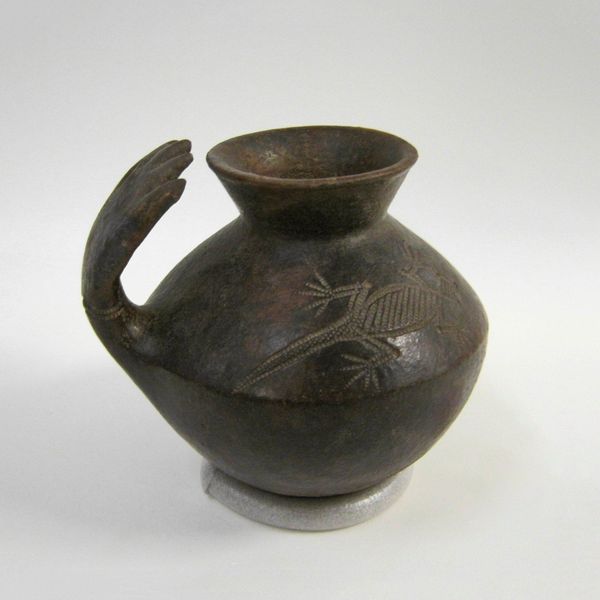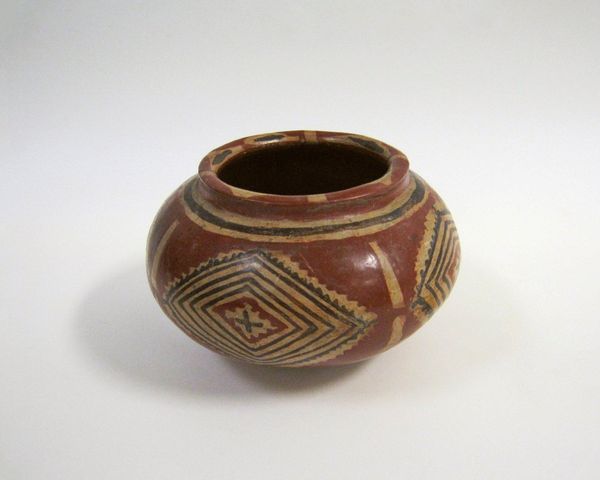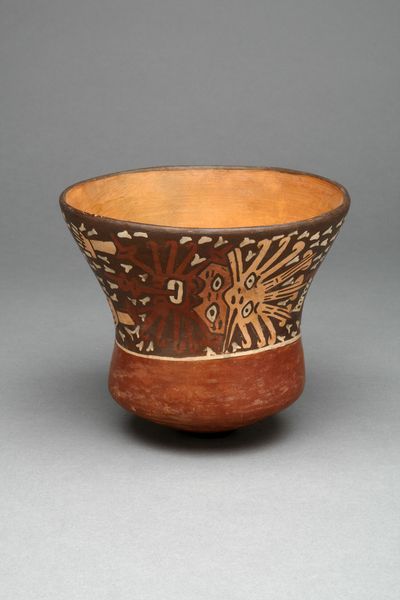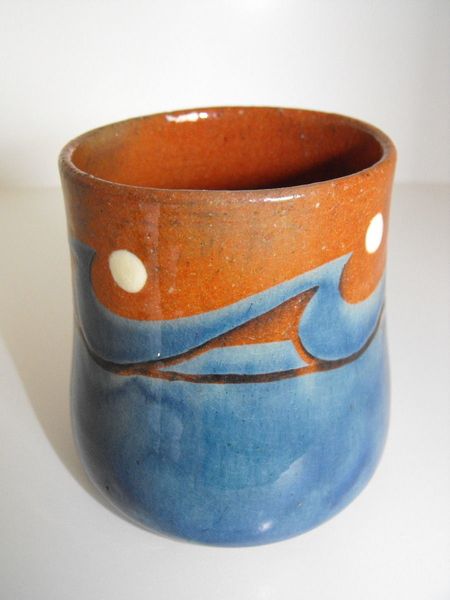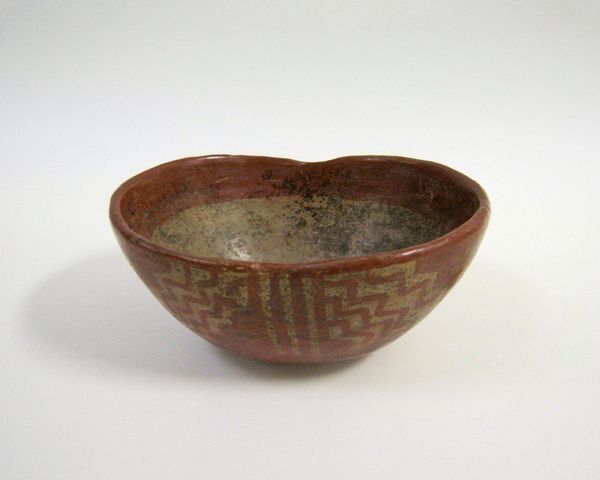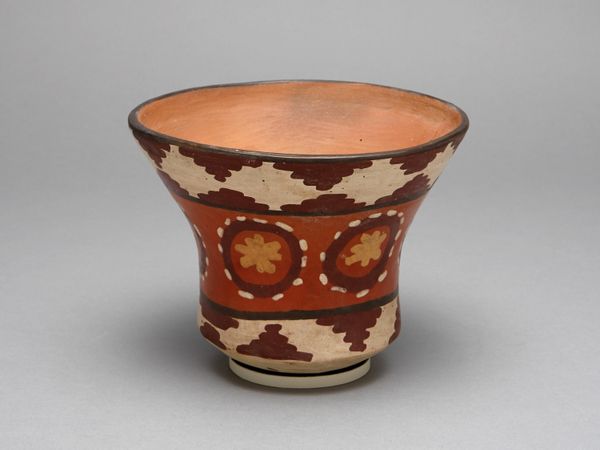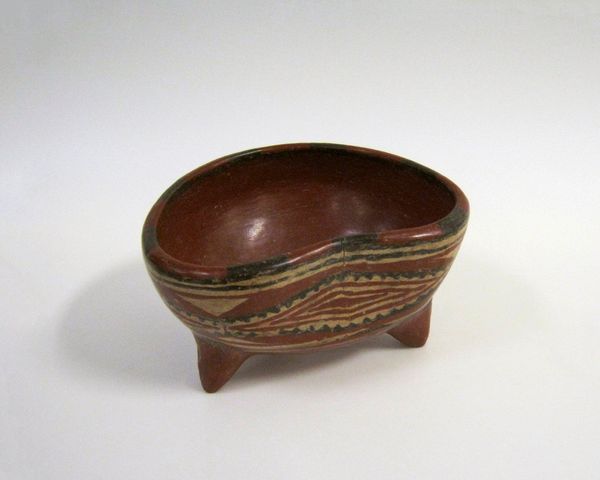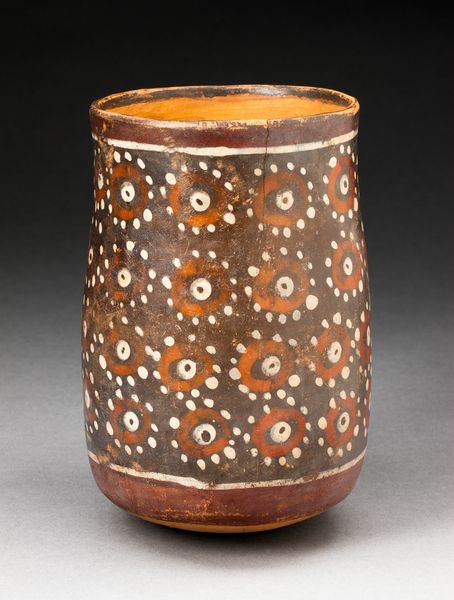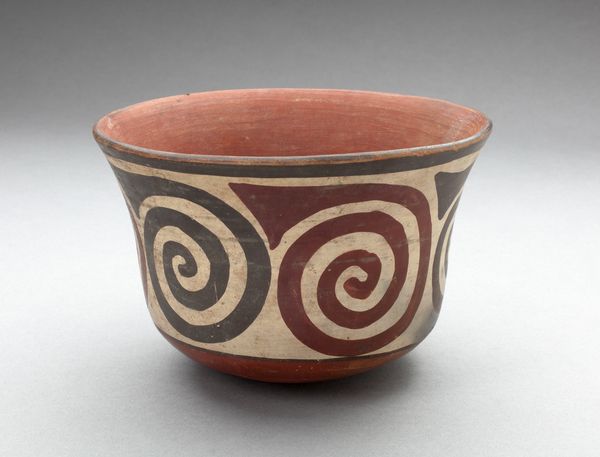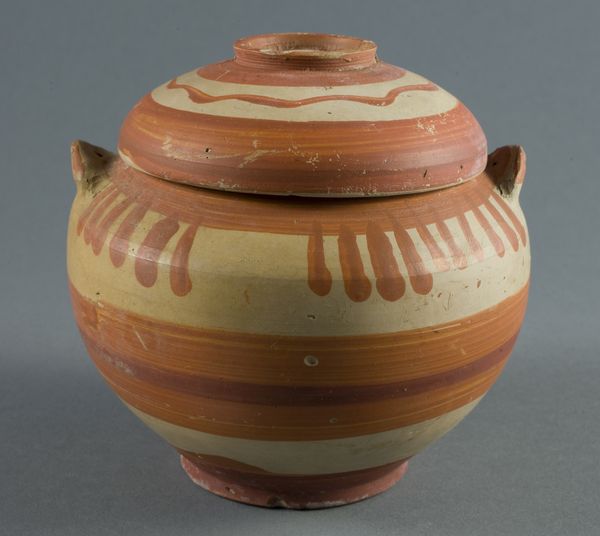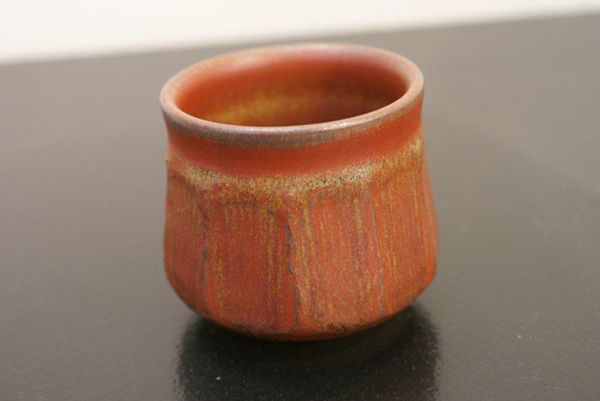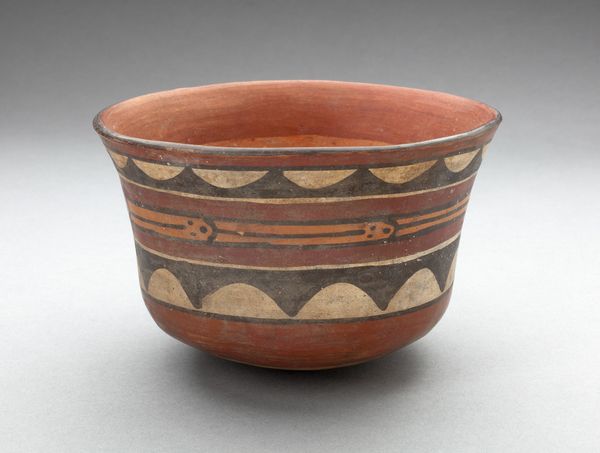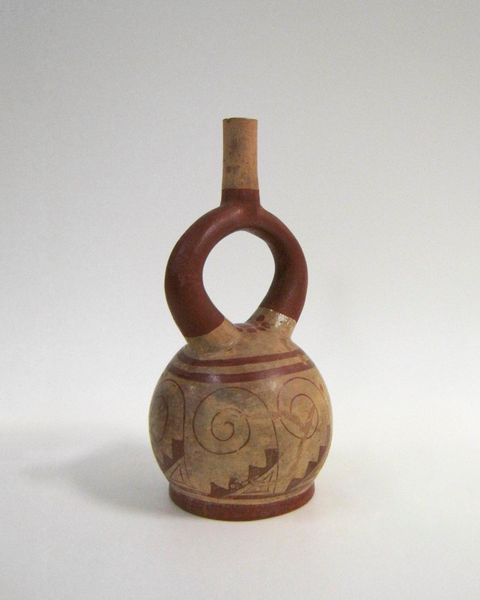
ceramic, earthenware
#
ceramic
#
earthenware
#
food illustration
#
stoneware
#
ceramic
#
abstraction
#
united-states
#
decorative-art
Dimensions: 10 1/16 x 6 7/8 x 6 7/8 in. (25.56 x 17.46 x 17.46 cm)
Copyright: Public Domain
Curator: Here we have a piece titled "Vessel," an earthenware and ceramic artwork believed to originate from the 20th century United States. It's part of the Minneapolis Institute of Art's collection. Editor: My first thought? There’s a kind of quiet simplicity to it. The single stylized flower gives a sense of directness, but the colors – earthy browns and muted tones – evoke a certain subdued feeling. It's almost contemplative, don't you think? Curator: Indeed. From a materialist perspective, you have to consider the process of creating something like this. The shaping of the earthenware, the application of the ceramic glaze... these techniques represent specific labor practices of their time. And what cultural expectations about what makes an object "art," versus simply functional, were present? Editor: That's an interesting point. For me, though, it's the enduring symbol of the flower that is grabbing my attention. We see this floral image in art for centuries. The shape and bold outline speak of nature, resilience, even optimism – particularly interesting to consider in a relatively subdued palette, where perhaps the symbolism is meant to comfort. The vessel form too, invites considerations of potentiality and nourishment, something to contain, to cherish. Curator: I can appreciate the flower's potential symbolic associations. But it’s essential not to divorce this piece from its context and production. How were these materials sourced? Was the piece created for commercial consumption or private use? Who was afforded the ability to acquire such an item, and what labor dynamic produced this accessibility? Editor: Agreed. Yet it is precisely these lasting symbols that link past and present. That is something that provides connection, beyond immediate socioeconomic concerns. We see something as simple as a flower, rendered in such stark lines, and it speaks to basic human yearnings: beauty, nature, even a sense of home. Curator: The interplay of those stark lines with the raw materiality of the earthenware really underscores a blending of artistic traditions and manufacturing capabilities. It hints at an interesting dialogue between handcraft and potential early industrialization. Editor: I suppose that contrast makes its visual statements much louder than first apparent! What began as a vessel holding an earthy calmness, also stores tensions between symbol, industrialization, nature, and process. Curator: Yes, thinking about both the construction and symbolism adds so many new facets to our reading of it! Editor: Exactly, now my head is full of flowers *and* production pipelines! Thanks!
Comments
No comments
Be the first to comment and join the conversation on the ultimate creative platform.
